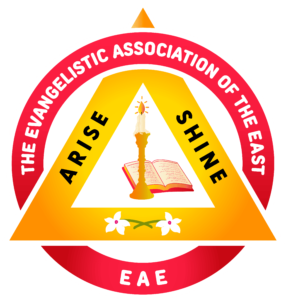E.A.E Arch Diocese of Syriac Orthodox Church
UNDER THE HOLY APOSTOLIC SEE OF ANTIOCH & ALL THE EAST
“And I also say to you that you are Peter, and on this rock I will build My church, and the gates of Hades shall not prevail against it.”
SINCE A.D 37
The Syriac Orthodox Church
Roots of the Syriac Orthodox Church can be traced back to the very dawn of Christianity, to the church of Antioch, where the disciples were first called Christians (Acts 11: 26). It is the first established church in Christianity gathering converted Jews and Gentiles to the name of our Lord Jesus Christ, and the second church after that of Jerusalem. Ecclesiastical history and traditions tell us that St. Peter the Apostle established a church in Antioch (circa A.D 37) and became its first bishop. After his martyrdom, he was succeeded by Evodius for the converted Jews and St. Ignatius Noorono (the Illuminator) for the converted Gentiles. Later on, the bishopric of Antioch was recognized in the ecumenical Synod of Nicea (A.D 325) as one of one of the Patriarchates of Christendom (along with that of Alexandria and Rome). Antioch’s bishopric produced a line of succession beginning with Apostle Peter and continues to this day in the Syriac Orthodox Church. In the midst of the 5th century, Bishops of Antioch, Alexandria, Byzantium and Rome, would be called patriarchs. The Syriac Orthodox Patriarch of Antioch used to be known by his own name; however, since 1293, the patriarchs of Antioch adopted the name Ignatius (after the Illuminator). The See of Antioch continues to flourish till our day, with H.H. Mor Ignatius Aphrem II being the 123rd Patriarch in the line of legitimate patriarchs. The patriarchate was forced to move from Antioch, which was the capital of the Roman province of Syria at the time of Christ, in 518, after a period of turbulent history, to different locations in the Near East until it settled in the Saffron monastery (Az-Za’faran or Dayro d’Kurkmo) in Mardin, Turkey, during the 13th century. After another period of heinous violence during and after World War I (which took the lives of about a half million Syriac Orthodox faithful), the patriarchate was transferred to Homs, Syria, in 1933, and later to Damascus in 1959. The Syriac Orthodox Church has produced several illustrious saints whose lives and works have a huge influence, not only on the Syriac tradition, but on Christianity as a whole. The Syriac church employs in its liturgy, which is one of the richest and most ancient, the Syriac language, an Aramaic dialect akin to the Aramaic spoken by Christ and the Apostles. The Syriac Orthodox Church followers today are around four million; the majority of them reside in India and the rest are spread mainly in Syria, Lebanon, Iraq, Jordan, Turkey, Egypt, Europe, North and South America and Australia. The Syriac Church is a member of the World Council of Churches which she joined in the year 1960 and is one of the founding members of the Middle East Council of Churches. It is also a member of the Council of Local Churches and collaborates with the other Christian Churches, and takes part in the ecumenical and theological dialogues at official and non-official levels.
(Source: syriacpatriarchate.org)
Our Lord's prayer in Syriac
ܨܠܘܬܐ ܡܪܢܝܬܐ
Parishes
Kochi-Travancore Zone
1. St. Thomas Edessa Church Nedungapra, Ernakulam
2. St. George Emmanuel Church Peruva, Kottayam
3. St. George Church Sharonkunnu, Pothanikkad, Ernakulam
4. St. George Church Anakkal, Malampuzha, Palakkad
5. St. Mary’s Church Kattikkayam, Idukki
6. St. Mary’s Church Thodupuzha, Idukki
Malabar Zone
1. St. George Church Aralam, Vellarivayal, Kannur
2. St. Mary’s Soonoro Church, Kelakam, Kannur
3. St. Mary’s Soonoro Pilgrim Church Meenangadi, Wayanad
4. Mor Behanam Church, Cheeral, Sulthan Bathery, Wayanad
Kasaragod Zone
1. St. Mary’s Soonoro Church Kottamala, Kasaragod
2. St. George Church Kozhichal, Kannur
3. St. George Church Padanakkad, Kasaragod
4. St. George Church Manjakkad, Kannur
5. St. John’s Church Poovathinkad, Kasaragod
N.R. Pura Zone
1. St. George Cathedral, N.R. Pura, Chikkamagaluru
2. St. Paul’s Church, Muttinakoppa, Chikkamagaluru
3. Mor Baselios Church, Gubbiga, Chikkamagaluru
4. St. Mary’s Church, Varkatte, Hanthuvani, Chikkamagaluru
5. Mor Ignatius Church Susalavani, Chikkamagaluru
6. St. John’s Church Karugunda, Chikkamagaluru
7. St. Mary’s Church, Hubli, Dharwad
South Canara Zone
1. St. Mary’s Soonoro Church, Renjiladi, Dakshina Kannada
2. St. George Church Shibaje, Dakshina Kannada
3. St. Thomas Church Nelliyadi, Dakshina Kannada
4. St. Mary’s Church, Kunthoor, Perabe, Dakshina Kannada
5. St. George Church, Addahole, Dakshina Kannada
6. St. Simeon’s Church Ichilampady, Dakshina Kannada
7. St. Mary’s Church Kakkinje, Dakshina Kannada
8. St. Mary’s Church Beluvai, Udupi
"Do you not know that you are the temple of God and that the Spirit of God dwells in you?"
1 Corinthians 3:16
Amended and approved by His Holiness Mor Ignatius Zaka I Iwas Patriarch.
